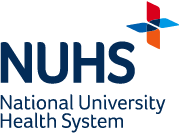Unfortunately, there is as yet a cure for the condition. However certain medical therapies or surgery can help. The type of treatment used depends on the age of the patient, her desire for future childbearing, and the severity of her symptoms.
Hormonal treatments
Medical treatment can be tried for symptomic relief. This involves giving drugs to create a reversible pseudo-pregnancy, or pseudo-menopausal state which can stop ovulation and hence allow the endometrial tissue to regress and die.
Combined Oral Contraceptive Pill
Side effects of this include bloatedness, nausea, vomiting, and weight gain.
Testosterone derivatives
Examples of this include Danazol and Gestrinone. The side effects of this treatment include acne, changes in voice, increased body hair.
Progestogens
Examples of these are Provera, Nor-ethisterone, and Depo-provera. Side effects include bloatedness, weight gain, mood changes, irregular bleeding, and delayed return of fertility. This is especially the case with Depo-provera.
GnRH analogues - create a pseudo-menopausal state
This group of drugs is given in form of injections or nose sprays and are usually used only for short durations (six months). Side effects include menopausal symptoms such as hot flushes, vaginal dryness, and reversible bone loss.
Mirena coil
This can be used to provide relief from symptoms like heavy menses.
With the exception of the Mirena Coil, Depo-provera, and the oral contraceptive pill, the drugs used to treat endometriosis are not contraceptives. As such, barrier methods of contraception should be used during treatment.
Surgery
Studies have shown that for patients with infertility resulting from Endometriosis, surgery offers a better chance of achieving pregnancy than medical treatments. Surgery is also advised for severe diseases such as large cysts, or severe symptoms. Conservative surgery aims to remove and destroy the Endometriotic nodules or cysts. This is usually done by laparoscopy (keyhole surgery), and in rare instances, an open operation or laparotomy. Removal of the uterus (hysterectomy) and the ovaries may be necessary to cure women with severe Endometriosis and who have completed child-bearing.

















